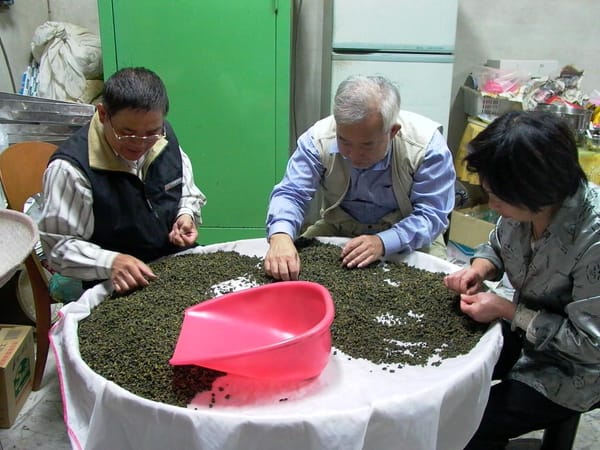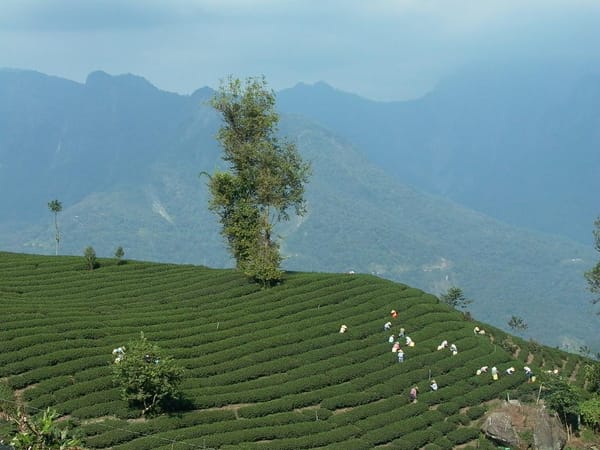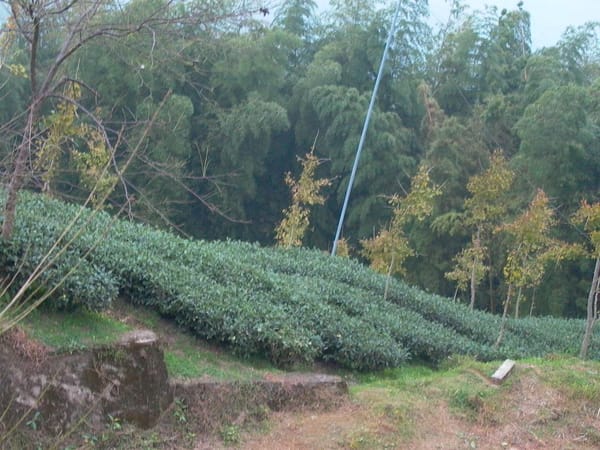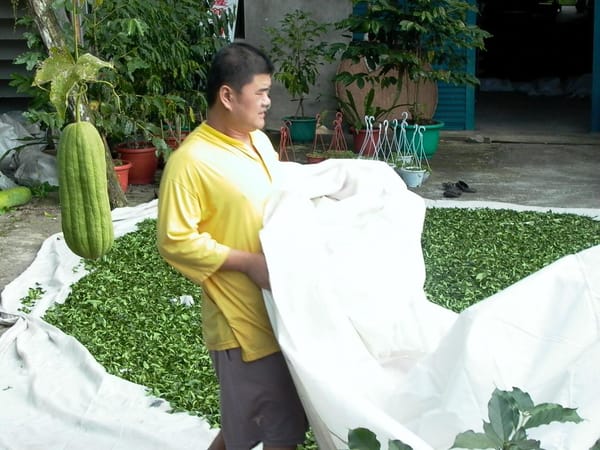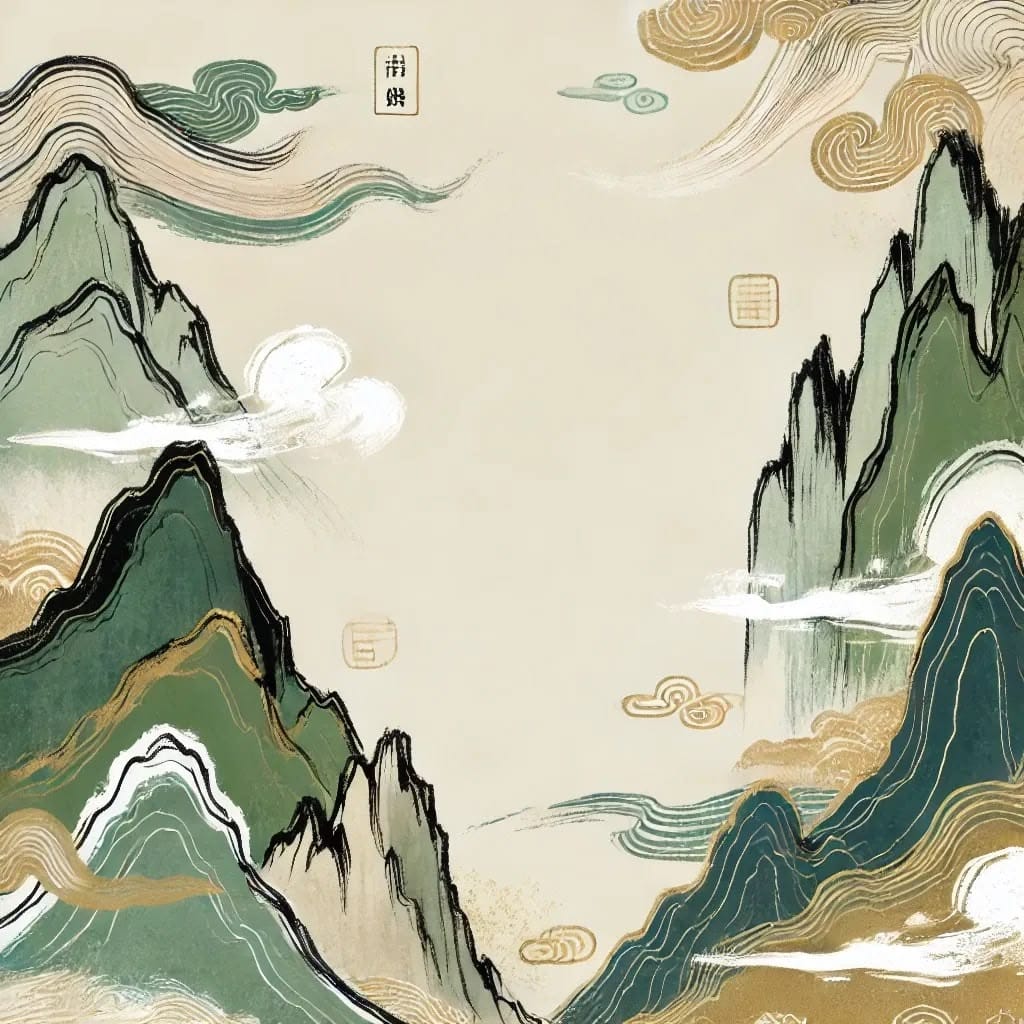In the landscape of Taiwan’s high mountain teas, one name is constantly linked with “sky-high tea prices”: Shanlinxi in Zhushan Township. More precisely, the Yangkeng tea area inside the Shanlinxi Recreation Area, situated at an altitude of 1,600 meters and covering only 41 hectares. Since the year 2000, this small tea zone has repeatedly set records for the highest-priced Taiwanese high mountain oolong tea. A single jin (600g) often fetches tens of thousands of NT dollars, astonishing even seasoned tea buyers.
Yet, when strolling into any urban tea shop, one often sees banners advertising “Shanlinxi High Mountain Tea Special Sale” at prices well below production-area wholesale rates. What market secrets lie behind this phenomenon? Why is authentic Shanlinxi Yangkeng tea so precious? And why does the market flood with “fake Shanlinxi tea”?
Let us step into this mysterious tea-growing zone to uncover the truth behind its rarity and quality, as well as the realities of authenticity and deception in the high-priced tea market.
Geographic Excellence: A 1,600-Meter Sanctuary of Tea
Shanlinxi Recreation Area in Zhushan Township stands at 1,600 meters—near the upper limit of tea cultivation in Taiwan. Its tea-growing zone spans only 41 hectares. Compared with other regions covering hundreds or even thousands of hectares, Shanlinxi represents a “micro tea region.”
But it is precisely this “small yet exquisite” quality that creates Shanlinxi’s distinct value. The cool, high-altitude climate slows tea growth, producing thicker leaves rich in compounds. Daily mist provides ample hydration and natural shading, allowing flavor substances to accumulate gradually.
Within Shanlinxi, Yangkeng stands out as the most elegant in tea character. The name “Yangkeng” (literally “goat pit”) is said to come from goats grazing here in earlier times. The geography is ideal: slopes ensure drainage, sunlight is sufficient for photosynthesis, and wide diurnal temperature variations enrich amino acids and aroma compounds in the tea leaves.
Scarcity Economics: 41 Hectares of Limited Supply, Premium Quality
The root reason Shanlinxi achieves record-breaking tea prices is the principle of “rare and superior.” With only 41 hectares, its production scale is negligible compared to Mingjian’s 2,500 hectares or Alishan’s hundreds of hectares. Annual production is but a fraction of large tea regions. This imbalance of supply and demand inevitably drives prices upward.
Even more importantly, Shanlinxi Yangkeng tea possesses the quality to justify its price: refined aroma, mellow taste, strong steeping endurance, and lingering sweetness. Tea lovers gladly pay premiums for these assurances of quality.
When a tea region offers both top-tier quality and extreme rarity, sky-high pricing becomes inevitable. This mirrors broader luxury agriculture markets, but Shanlinxi Yangkeng pushes scarcity economics to the extreme.
Post-2000 Price Surge: A Turning Point for High Mountain Tea
Records show Shanlinxi’s high mountain oolong teas “have frequently set price records since 2000.” This is no coincidence. The early 2000s marked a turning point for Taiwan’s high mountain tea market.
By then, after two decades of development, consumer appreciation and willingness to pay for premium teas had matured. Simultaneously, Taiwan faced intensified international competition, pushing growers and merchants to seek products that could break price ceilings.
Yangkeng tea emerged at precisely this juncture, becoming the symbol of Taiwan’s top-grade high mountain tea. Its record-setting prices not only enriched growers but also established a benchmark of value for the entire sector. More than economics, this breakthrough proved that Taiwan could produce teas worthy of global prestige.
Authenticity Challenges: The Trap of Low-Priced Shanlinxi Tea
However, Shanlinxi’s fame has invited problems. As noted: “In many urban tea shops, banners boast ‘Shanlinxi High Mountain Tea Sale,’ often at prices lower than wholesale at the origin.” This casts doubt on authenticity.
The issue reflects a broader market problem: overuse of prestigious origins. When Shanlinxi became renowned, many merchants began passing off teas from other regions—or even imported teas—as Shanlinxi to exploit the brand name.
This harms both consumers and authentic Shanlinxi growers. Buyers miss out on genuine tea, while farmers see their brand value diluted. It highlights the importance of origin verification and buyer awareness in premium tea markets.
Logic Check: Consumer Rationality in Tea Purchasing
How should consumers judge authenticity amidst so much “Shanlinxi tea”? One practical guideline: “Return to price and tea quality fundamentals.”
Authentic Yangkeng tea is too scarce and costly to sell cheaply. If tea is priced at mid-altitude levels yet labeled as Shanlinxi, logic demands skepticism—“Why would anyone sell at a loss?”
Beyond price, tea quality provides further clues. Genuine high-altitude tea carries aromas and flavors impossible to replicate artificially. Experienced drinkers often discern authenticity by taste.
Thus, consumers should consider not only price but also merchant credibility, origin certification, and willingness to offer tastings. Multiple checks together protect against deception.
The NTU Forest Station: Academic Backing for Quality
The Shanlinxi tea zone includes both the NTU Experimental Forest (National Taiwan University Forest Station) and Yangkeng. Among these, Yangkeng’s tea is considered the most distinguished. The involvement of NTU lends academic rigor and stability to Shanlinxi’s reputation.
University-led management introduces scientific cultivation and strict quality standards. Research expertise helps farmers adopt advanced techniques and maintain consistency. Furthermore, the NTU brand adds consumer trust. Academic involvement strengthens both branding and market credibility.
Conclusion: Rarity, Value, and the Challenge of Counterfeits
The story of Shanlinxi Yangkeng tea, which set records for Taiwan’s high mountain oolong prices, exemplifies the maxim “rarity begets value.” Its 41 hectares at 1,600 meters create a rare treasure in Taiwan’s tea world.
Yet, its fame also risks misuse, as fake Shanlinxi teas flood the market. Consumers must learn to distinguish authenticity, not only to protect themselves but also to honor the farmers whose dedication sustains this cultural heritage.
For true tea lovers, Yangkeng tea is more than a beverage. It is a testament to craftsmanship, nature’s bounty, and Taiwan’s tea-making spirit. Every sip of this mountain nectar embodies both artisanal mastery and ecological blessings. Only by rewarding authentic excellence can such precious traditions endure.

